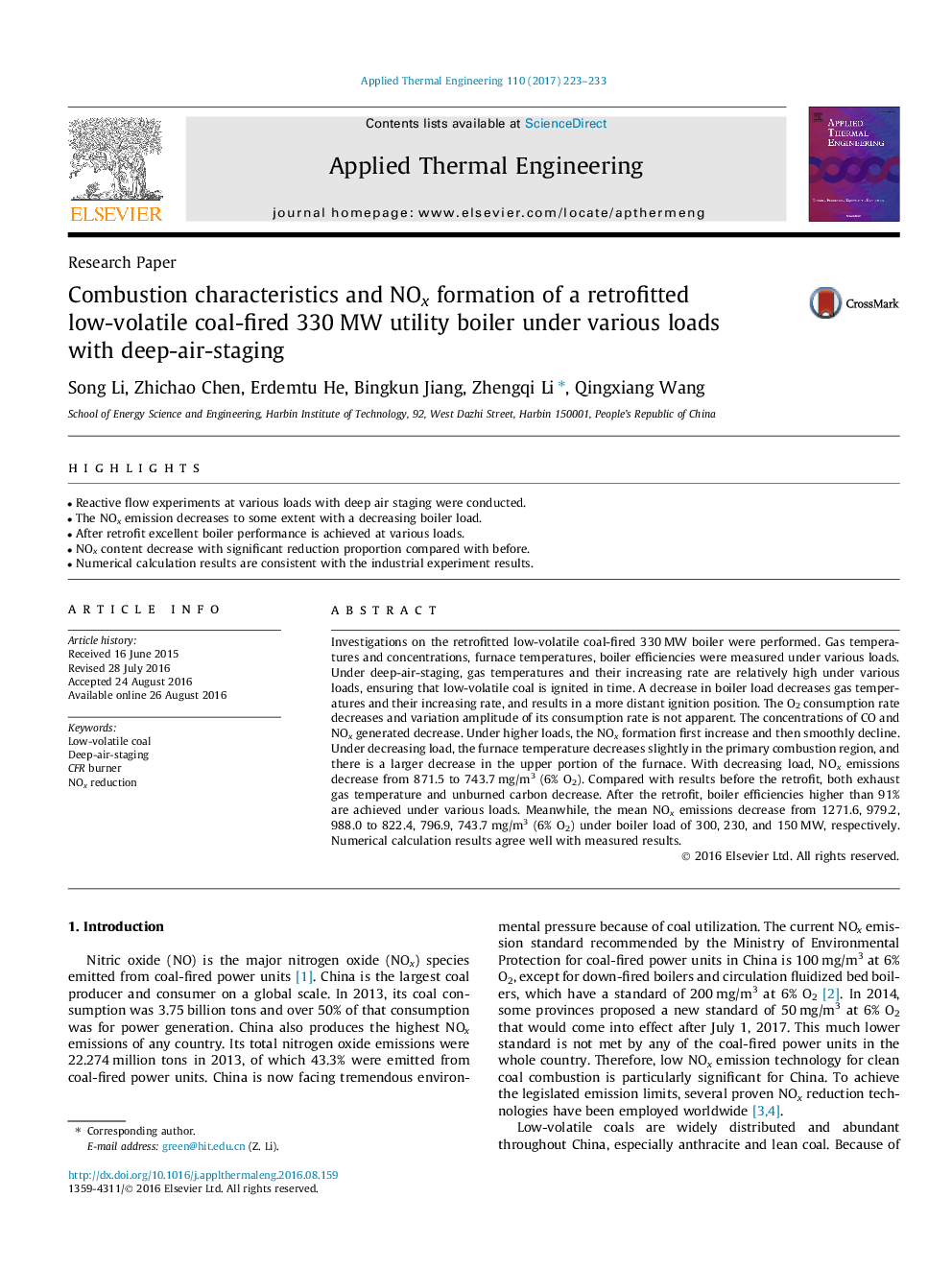| Article ID | Journal | Published Year | Pages | File Type |
|---|---|---|---|---|
| 4992010 | Applied Thermal Engineering | 2017 | 11 Pages |
Abstract
Investigations on the retrofitted low-volatile coal-fired 330Â MW boiler were performed. Gas temperatures and concentrations, furnace temperatures, boiler efficiencies were measured under various loads. Under deep-air-staging, gas temperatures and their increasing rate are relatively high under various loads, ensuring that low-volatile coal is ignited in time. A decrease in boiler load decreases gas temperatures and their increasing rate, and results in a more distant ignition position. The O2 consumption rate decreases and variation amplitude of its consumption rate is not apparent. The concentrations of CO and NOx generated decrease. Under higher loads, the NOx formation first increase and then smoothly decline. Under decreasing load, the furnace temperature decreases slightly in the primary combustion region, and there is a larger decrease in the upper portion of the furnace. With decreasing load, NOx emissions decrease from 871.5 to 743.7Â mg/m3 (6% O2). Compared with results before the retrofit, both exhaust gas temperature and unburned carbon decrease. After the retrofit, boiler efficiencies higher than 91% are achieved under various loads. Meanwhile, the mean NOx emissions decrease from 1271.6, 979.2, 988.0 to 822.4, 796.9, 743.7Â mg/m3 (6% O2) under boiler load of 300, 230, and 150Â MW, respectively. Numerical calculation results agree well with measured results.
Keywords
Related Topics
Physical Sciences and Engineering
Chemical Engineering
Fluid Flow and Transfer Processes
Authors
Song Li, Zhichao Chen, Erdemtu He, Bingkun Jiang, Zhengqi Li, Qingxiang Wang,
